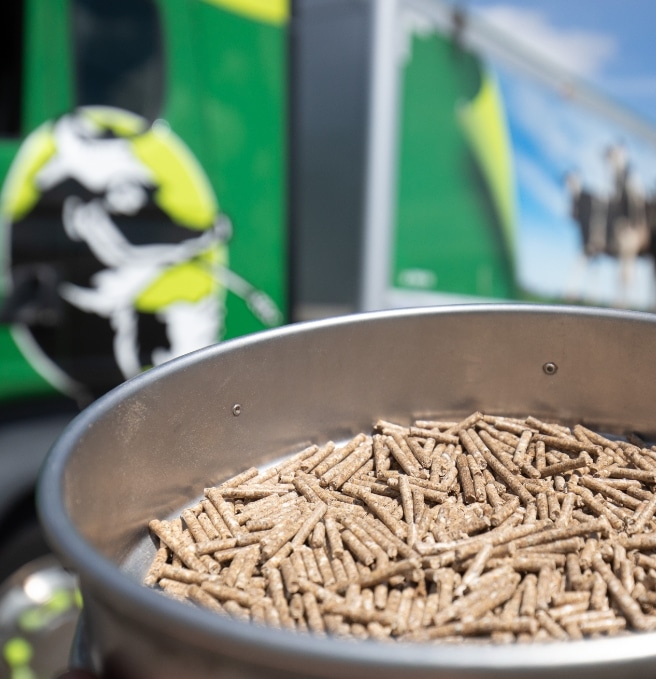
It’s time to stop thinking of a bag of fat as a bag of fat and instead think about the balance of fatty acids being fed to dairy cows in order to meet specific requirements.
That was the message from Dr Adam Lock of Michigan State University at a recent Mole Valley Farmers’ “Get your fa(c)ts right” mini-roadshow.
The event saw Dr Lock speak to farmers at a day-time event hosted by the Templeton family at Pocknave Farm, Kilmarnock, followed by an evening meeting at Ernespie House Hotel, Castle Douglas.

On the day, Dr Lock threw out traditional thinking that suggested feeding fats to fresh cows was ill-advised due to the fact cows were already mobilising body fat at this time. Instead, he highlighted research from Michigan State University which had found that providing specific fats to fresh cows could actually boost milk yields by 4kg a head a day, without compromising body condition.
This highlighted that “not all fats are created equal” and achieving a positive outcome ultimately came down to choosing the right balance of fatty acids.
In Dr Lock’s trial work, cows were fed varying ratios of palmitic and oleic acid in a two thirds maize silage, one third alfalfa diet. Supplemental fatty acids made up 1.5% of total diet dry matter and were fed for the first three weeks post-calving.
Feeding a 60:30 blend of palmitic and oleic acid resulted in a 4.5 kg per cow per day increase in energy corrected milk (ECM) over the fresh period. At the same time, those cows didn’t lose any more body weight over the control group that did not receive fats.

Although cows fed an 80:10 blend of palmitic and oleic acid also increased ECM to a similar level, they lost more body weight over the control group, which suggested there was a threshold for the palmitic and oleic ratio.
Fatty acids were taken out of the diet after three weeks. Cows that were supplemented with the 60:30 blend during the fresh period continued to produce 4 kg more ECM than control cows for a further seven weeks, despite all cows being fed the same diet during this seven week period.
“There’s some kind of programming during the fresh period,” explained Dr Lock. As a result, he urged farmers to consider feeding a balanced supply of fatty acids to fresh cows.
He said the right balance of fatty acids depended on stage of lactation and also milk contract requirements.

For example, palmitic acid promoted milk fat production, whilst oleic acid helped yields and promoted body weight gain after peak lactation. This meant that ratios would need to be tweaked according to specific systems and milk contract requirements. In general, less oleic was required post peak to stop cows from getting too fat.
For example, for the first 2-3 weeks of lactation, a fatty acid balance of 25-30% oleic and the rest palmitic acid was ideal. Once cows had reached peak – and were at an ideal body weight for a specific system – oleic acid should be dropped back to 10%, with 90% from palmitic acid.
This could be achieved by buying a couple of products and blending them on farm or buying a pre-blended, specially designed product, like Mole Mega-Fat Multi.